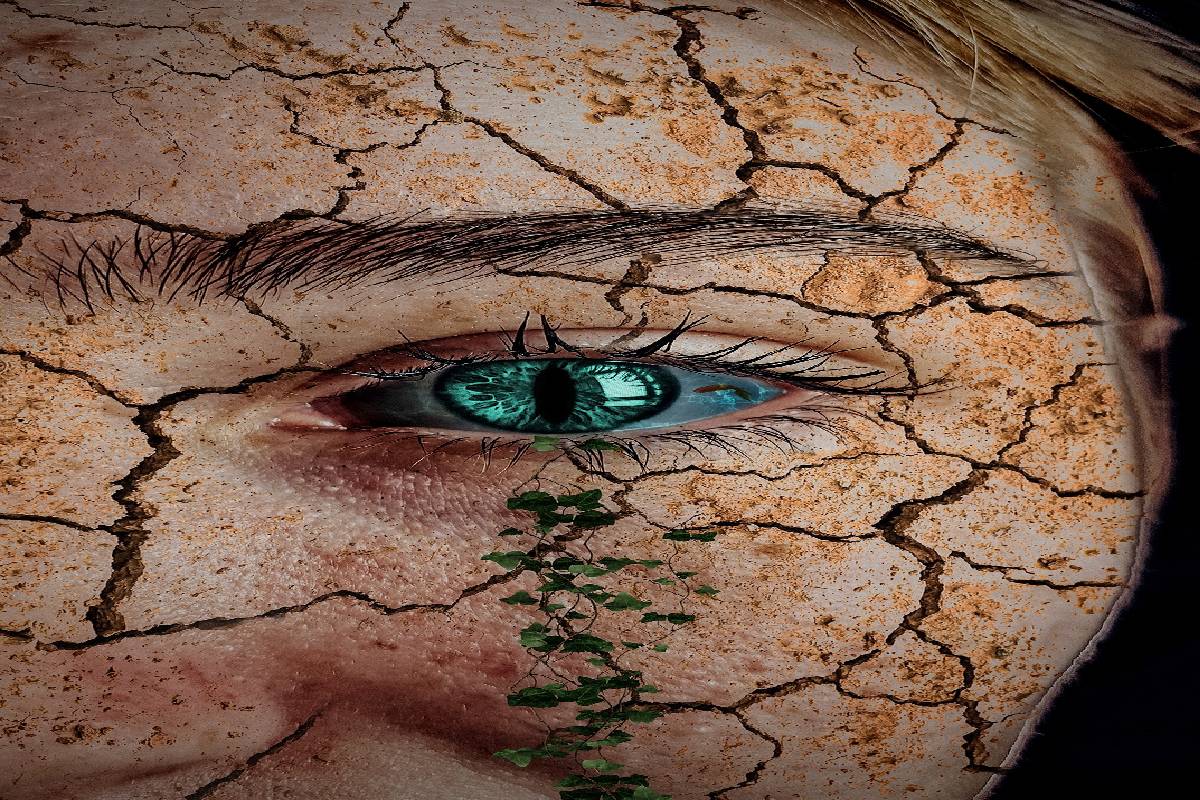Dehydrated skin – is a temporary condition of the skin and can be affected whether you have parched skin or oily skin. You heard right. You can have oily and dehydrated skin. We have not gone crazy!
Any skin can be dehydrating in a transitory moment due to external factors such as extreme temperatures, application of aggressive cosmetics, intake of certain medications, lack of humidity in the environment, stress, prolonged exposure to the sun, which translates into a lack of water in the body, this is what causes the skin to be dehydrated.
Therefore, it is vital to consider the hydration of the skin and know what products can help increase the level of water it needs to achieve healthy skin with shine and elasticity.
You have heard the concepts of oily skin, dry skin, combination skin, sensitive skin, right? They are commonly used to define a person’s skin type.
This means that your skin throughout much of your life is one type or another, depending on genetics, and will remain that way most of the time. However, there are times when your skin can temporarily change and become, for example, dehydrated.
Table of Contents
Symptoms of dehydrated skin
The main symptoms of dehydrated skin are usually dullness, itchy skin, tightness, and peeling.
Dull and dull dry skin
More than once, you will have noticed that your skin seems dull, without vitality, and that makes your face look tired.
Well, this is due to dehydration of the skin. We must bear in mind that our skin loses water throughout the day, so it is vital to help it regain the water levels it needs. Drink between 1 and 2 liters of water a day and use cosmetic products that notably favor that hydration.
Itchy, rough, or peeling skin
Another symptom that will help you identify dehydrated skin is a lack of smoothness. The skin begins to peel as if it were peeling, and sometimes it can even cause itching. This causes our skin to be uneven and appear more irregular and rough.
Appearance of wrinkles
Dry or dehydrated skin tends to generate fewer pimples or blemishes but is also more likely to have wrinkles due to premature aging. This is another symptom that can be associated with dehydration of the skin.
Presence of stretch marks on the face
Just as stretch marks can appear on the abdomen and other parts of the body with sudden weight gain and lack of hydration, they can also appear on the face. These minor marks occur when the skin does not have enough elasticity to adapt to a change in volume. The leading cause of this lack of elasticity is dehydration of the skin.
Tightness in the skin
We have all had that feeling of tight skin without elasticity at some point. This is due to a significant shortage of water in the skin.
The use of cosmetic products can also generate this sensation if they are too aggressive with the skin. Remember, you must choose well those products that take care of and pamper your skin.
But do not spread panic! Dry skin can be treate, and here are tips to make it noticeably better.
How is dry skin different from dehydrated skin?
That’s right, dehydrated skin and dry skin are not the same. The main difference is that dry skin is a type of skin with specific common characteristics and is determine by genetics and other factors that we cannot change.
If you have dry skin, you have to adapt your daily routine to this type of skin that may need more intense hydration.
Dehydrated skin on your side is a temporary state. The lack of water in the body, little humidity in the environment, and other factors that we have already mentioned before can cause the skin to be temporarily dehydrated.
It does not depend on the type of skin you have. If you notice that your skin is dehydrated, you should intensify the hydration.
Dry skin, as we have said before, is usually due to a genetic issue and is characterized by a lack of lipids (fats), while dehydrated skin is due to a lack of water.

